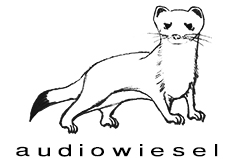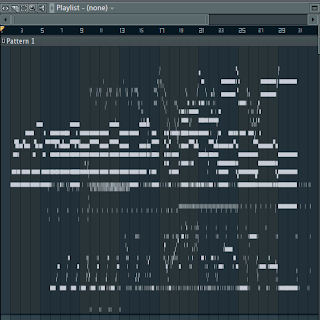Some Stats to start off with:
Start date: 2013 May 5 (12.30 am)
End date: 2013 May 6 (4 am)
VI Library used: 100% Hammered Acoustic Guitar by Audio Wiesel (running off NI Kontakt)
DAW: FL Studio 11.0
Position & Reverb: VSL MIR-Pro 24
Dynamics: NI Solid Bus Comp, NI Solid EQ
Amp simulator / distortion processor: NI Guitar Rig 5
Yesterday I purchased Audio Wiesel's Hammered Acoustic Guitar (H.A.G.) virtual instrument.
Hammered Acoustic Guitar (HAG) is a sampled virtual instrument that runs on Native Instrument's Kontakt. HAG requires the full version of Kontakt 5.0.3 or later.
The concept behind this sampled library is the use of drum sticks and brushes to produce musical tones and sound effects from an Ibanez AE acoustic guitar. In order to make it punchy and powerful the guys at AudioWiesel used two steel strings and tuned them to same pitch. This resulted in the strings modulating each other producing a very lively, natural and organic sounding tone.
Containing 45 patches, 2280 samples at 2.5GB in size, HAG is no child's play. Being sampled by high end audio recording equipment at 44.1kHz / 24-bit, HAG contains 9 times round-robin and 7 dynamic layers. HAG is broken down into 2 products (core, and fx & percussion). These can also be purchased as a bundle.
I was so caught up in the quality and potential of the library, I decided I could build a whole song out of just one library. So over the next 30 hours (and in between spending time with my wife and household chores), I managed to complete this piece using only sounds from H.A.G. Only 4 patches out of 45 in the HAG library were used,
This was the first time I wasexploring the use of non-conventional sounds and using them to replace roles of a traditional band (using some patches to assume the bass, and some other sounds to fill up the high registers, for example). Same thing went for the percussive section.
Doing this made me become very aware of the sound I was producing, on top of the pitch and notes they were representing. Now I had to take care of another aspect of the production: controlling the tone and timbre of each part. This was on top of just making it play the correct pitch in the melodic and dynamic expressions department.
All this resulted in me spending quite a bit more time on the sound sculpting to get each track to sound just right. That was mainly due to the fact that I was only using 4 patches for the whole piece, so naturally I have more than 1 part using the same patch. If I did not make the same patches sound different for different parts, the whole mix would sound like a mess, with the same instrument playing all the different parts.
Fortunately HAG was programmed with sound-design in mind, so there were some controls that were conveniently located to enable me to drastically affect the sounds of each patch. However, I still needed to use Native Instrument's audio processing tools on top of those available in the patches themselves.
In the middle of writing I had a wild idea, and put a H.A.G. "soft mallet" patch through a guitar amp/distortion simulator. What I got was a pleasantly unique distortion sound that lends itself well to the piece. It is electric-guitar sounding, but because of the percussive nature of the soft mallet attack, it added interesting frequencies to the timbre as compared to what we are used to hearing on regular electric guitars.
Thanks to the faithful sampling workflow from the guys at AudioWiesel, who meticulously included the trailing end of all the notes, the 'electric guitar' actually had a long sustaining trail that gave a warm sustaining tone even after distortion is applied. Techniques like this give rise to the possibility of further expanding the sonic potential of this sampled virtual instrument.
For placement and reverb I used VSL's MIR24-Pro. Here's a peek into how the tracks were placed in 'space'.
 |
| from the naming of the instruments you can probably figure out which HAG patches I used in the song |
One of the unique points about the piece is that there are only two main chords: F Minor and B Major with accidental notes occasionally added to slightly alter the sound of the chords.
Finally, I entitled the piece Touch and Go, partly because this phrase was mentioned recently at work (by my boss), so it was at the front of my mind.
Also, I named it Touch and Go because I felt that it appropriately described my guilt for letting the song build up to the high point only briefly and then hastily declining in intensity for the rest of the way. To me the high point was near the middle when the distortion patch came in, and I felt I did not keep it long enough to satisfy the listener. From this point of view, I think I am justified to say that this piece is not really structurally pleasing.
I hope you like the piece!



No comments:
Post a Comment